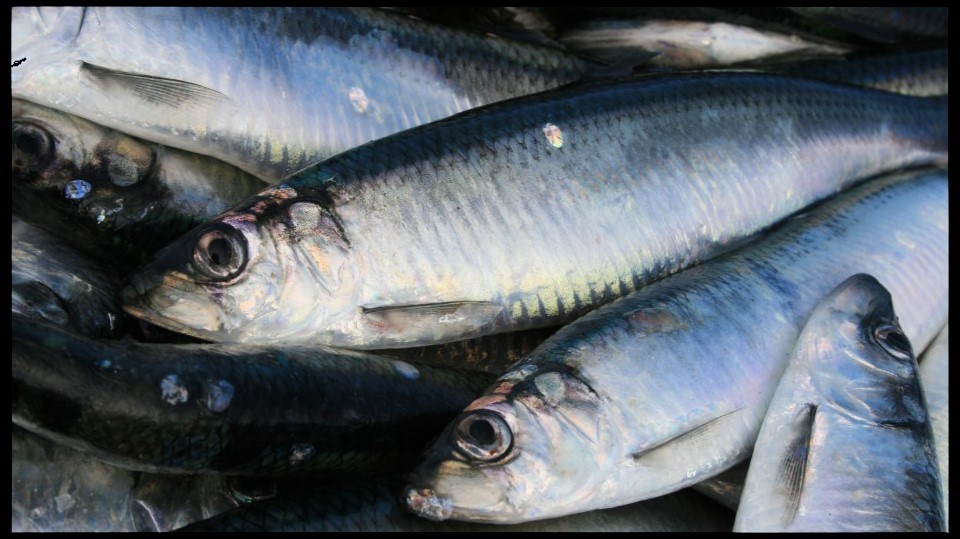Canada’s new Fisheries Minister, Joyce Murray, will shut down half of the commercial herring fishery in B.C.
Murray announced Thursday that the total harvest for Pacific herring in the Strait of Georgia will be reduced to 10%, and a maximum allowable catch of 7,850 tonnes. That is half of the 20% harvest rate that has been allowed in the past, based on DFO assessments for sustainable harvest rates.
Today’s announcement follows the closure of 60% of the commercial catch for salmon earlier this year.
“She’s cut us in half for no reason,” said James Lawson, president of the UFAW-Unifor fishermen’s union in B.C.
“It was suggested this year by DFO science that 20% will be sustainable in the Strait of Georgia,” Lawson said. “That’s according to the science coming out of her own department. Cutting it in half against her department’s own science is ludicrous.”
The most blistering criticism of Murray's decision comes from Carl Walters, a retired DFO scientist.
"These clowns appear to be completely indifferent to, and are not accountable for, the impacts that they are having on the livelihoods and lives of people who have depended on fishing," he said in an email to BIV News. "Their approach to ecosystem based management is a joke."
The reductions in the allowable catch for the commercial sector for Pacific herring is tied to falling wild salmon numbers. Herring is a forage fish and a food source for salmon and marine mammals – notably sea lions.
In a news release today, the fisheries minister said DFO will take “a more cautious approach” to herring management, “based on recently intensified risks to wild salmon,.”
“This approach will see most commercial fisheries for Pacific herring closed, and limited to First Nations food, social and ceremonial fisheries,” the release states.
“This is an extraordinary time, when our Pacific Coast is reeling from natural disasters, and the serious damage they have caused to the environment and our iconic Pacific salmon,” Murray said in a press release.
“Herring are vital to the health of our ecosystem, and the stocks are in a fragile state. We must do what we can to protect and regenerate this important forage species.”
The herring fishery is an important one for B.C.’s battered commercial fishing sector. The roe (eggs) are harvested from females and fetch high prices in Japan and China. The herring themselves are used for a variety of other purposes, including human consumption, bait and for making pet and fish food.
“Taking this away is huge,” Lawson said.
It means the loss of an important money-maker in the spring, as the herring fishery typically takes place in March.
“Every fishery has a high overhead cost, just to go fishing,” Lawson said. “And now to be told we’re only going to have half the earning power, despite science saying we should have 20% -- there’s going to be people where this whole operation just became unviable.”
Rob Morley, executive director of the Herring Conservation Research Society and chairman of the Herring Industry Advisory Board, agrees the reductions in herring harvest will be devastating and said it is unnecessary.
The most recent forecast for Pacific herring for 2021-2022 was 80,000 metric tonnes, Morley said. Cutting the allowable catch to just 7,850 metric tonnes is unnecessary, Morley said.
“It is completely unnecessary to conservation. This is not about food for salmon. I think it’s responding to uninformed political opinion.”
In providing guidance, DFO scientists provide a range of options for harvest rates.
“They don’t come out with a single recommendation,” Morley said. “What they said was a 20% harvest rate is sustainable and is conservative.
"Obviously 10% is more cautionary, but it’s not necessary. It’s costing you half the business and it’s not necessary to preserve the stocks and ensure the stocks remain at a healthy population level.”
Walters said DFO is taking the precautionary approach too far in making its decisions on conservation.
"Their so-called 'precautionary' approach to harvest management has involved setting harvest limits and minimum population size targets that are far more risk-averse than needed for safe and sustainable fisheries management, in the name of making sure that there is never even temporary overfishing and that fisheries have no impact on 'biodiversity,'" Walters said.
He added that DFO appears to be ignoring one of the biggest threats to B.C.'s herring populations: seals and sea lions. Their numbers used to be controlled by First Nations, but harvesting of seals and sea lions was banned in the 1970s, and their numbers have increased significantly since then.
"They have ignored the massive increases in seal and sea lion populations that have occurred over the past 40 years, to levels most likely much higher than they have been for several millennia due to harvesting by First Nations people," Walters wrote. "Steller sea lions now consume more fish than all of BC’s commercial fisheries combined."



